Life Is A Cabaret
Exploring Barbra Streisand's underground mall; where indulgence meets imagination
A friend told me about Barbra Streisand's mall, but most of the press articles only focus on the kitsch. There’s more depth to it than people give her credit for.
Some people have wine cellars. Others have man caves. But Barbra Streisand has a shopping mall in her basement. Yes—a mall. Not just a walk-in closet or a big dressing room, but an underground wonderland with boutiques, a candy store, and even a doll shop. This is not the usual celebrity excess—it’s an emotional and artistic statement, a passion for beauty, history, and personal desires coalescing in an unapologetic extravagance.
Barbra's mall is more than just a symbol of her wealth—it's a blend of glamour, whimsy, practicality, and meticulous design, though many may dismiss it as utterly unnecessary. It’s something only she could pull off, and I can’t fault her for her high standards. After all, this is a woman who cloned her dog—twice—and personally called Apple CEO Tim Cook to correct Siri’s pronunciation of her name.
Beneath it all, however, lies an undeniable and deeply relatable truth: we all want spaces that reflect who we are and bring a sense of fulfillment. For some, it’s a cozy reading nook, a spa-like bathroom, or a garage with a woodshop and tools. For Streisand, it’s an underground village of boutique shops—a logical (if extravagantly over-the-top) expression of that same universal longing.
The inspiration behind the street of dreams
Even among Hollywood’s most lavish home indulgences, Barbra’s mall stands apart. Nestled beneath her 10,000-square-foot, $100-million Malibu estate, it offers insight into who she is and where she came from—a blend of her love for design, her perfectionism, and her way of making up for a less-than-ideal childhood.
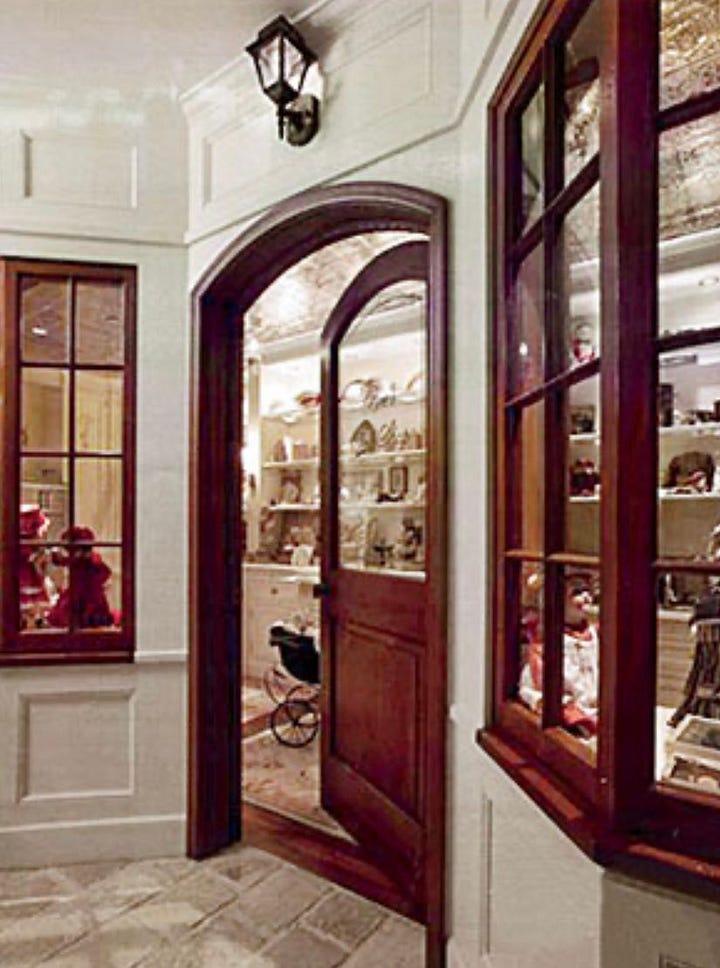
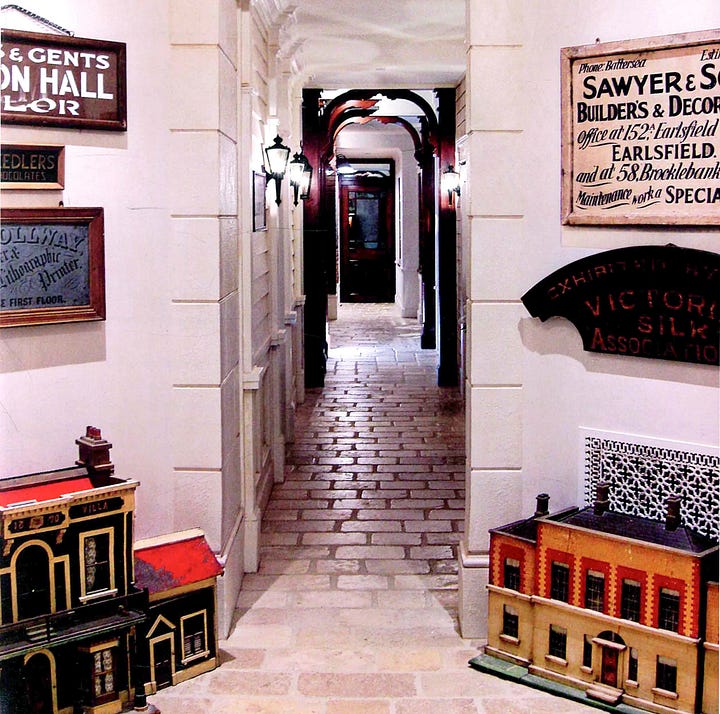

Inspired by the Winterthur Museum in Delaware, known for its Americana and decorative arts collections, Barbra designed her own mall, a quaint, old-fashioned street of storefronts, featuring vintage architectural elements and furnishings to showcase an extensive collection of treasures.
Streisand has often connected her love of collecting and creating beautiful spaces to her childhood trauma. She experienced poverty from an early age, losing her father as a baby, and has described her childhood as emotionally and materially sparse. She once said, “You’d do anything to get that mother or father back. But you can’t. Yet with objects, there’s a possibility.”
In 2010, she chronicled her design journey in a book titled My Passion for Design (link in Repository). The book showcases her careful process of designing and decorating her homes, particularly her Malibu estate. It’s a blend of personal stories, photographs, and details about her love for architecture, aesthetics, and collecting art and antiques.
A Barbra-inspired wonderland
Barbra’s mall combines her possessions and interests into a unique perspective. The clothing store is dedicated to her wardrobe—a curated collection of outfits from her performances alongside vintage pieces she’s collected since her early acting days when she couldn’t afford clothes. The Gift Shoppe displays her collection of home goods and Americana-themed antiques, including glassware, antique pottery, and serveware. Bee’s Doll Shop reflects her lifelong fascination with dolls, a poignant effort to recapture the childhood she missed. As a child, Streisand didn’t have toys and would sleep clutching a hot water bottle, which felt like a person. There’s also a sweet shop, stocked with frozen yogurt, popcorn, and licorice. Let’s be honest—if you could have a candy store in your house, wouldn’t you?
Beyond the kitsch: a lesson in period design
While Barbra Streisand’s basement mall may initially appear to be a kitschy collection of random items, it is, in fact, a carefully curated architectural study that seamlessly blends architectural elements like cobblestones and corbels, antique signage, furniture, and accents with several period-specific themes.
The antique clothes shop
The clothing store in Streisand's basement mall houses her antique clothing collection as well as clothes she wore in Funny Girl, when she met JFK and Queen Elizabeth. The room’s eclectic furniture includes a reupholstered chaise from the Loire Valley and a French chandelier. The herringbone floor and the gold detailing are inspired by Vienna’s Schönbrunn Palace. The decor is harmoniously coordinated with the lavender-painted walls and closets, gold trim, and an Aubusson rug with rose, green, and gold accents.
The Georgian display room
It features a collection of 18th-century creamware and Art Nouveau plates, along with a Wiener Werkstätte tea set. The space is furnished with Chippendale chairs covered in a rich green damask, which contrasts beautifully with the mahogany wood cabinetry and furniture. An octagonal display table takes center stage, with the floor patterning and cabinets echoing the same octagonal shape, adding symmetry and visual interest.
Art Nouveau rooms
In the Art Nouveau store, delicate wrought-iron-like accents and flowing forms capture the elegance of the early 20th century. One of the personal touches is art posters of Sarah Bernhardt by Alphonse Mucha. Sarah was an entertainer that Streisand feels a deep personal connection with.
There are also Louis Majorelle chairs upholstered in Art Nouveau-patterned fabric, a griffin sculpture by Bernhardt, and an Emile Gallé cabinet carved with blossoms reminiscent of Queen Anne lace. The decor is complemented by an embossed metal fireplace, while a Charles F.A. Voysey rug anchors the textures and other historical influences.
Why a mall?
Why not? The real question is, “Why don’t we all have our own version of the mall?” The mall defies logic and celebrates creativity and extravagance, like the lady herself. While most of us will never see her subterranean paradise, a vision of Barbra perusing her doll shop and nibbling on vintage sweets feels apropos. Life really is a cabaret... or in this case, a mall.
Thank you for reading and your support. If you could have any space you wanted in your home, what would it be? Tell me in the comments please. I’m dying to know.
Queen’s Repository
Sources and References
Barbra Streisand, My Passion for Design (2010).
Buyer and Cellar: Barbara’s mall inspired the off-Broadway play "Buyer & Cellar," about an aspiring actor who gets the role of his life as the shopkeeper in Streisand's mall.
Alphonse Mucha was a Czech artist and a defining figure of the Art Nouveau movement, renowned for his intricate and romantic designs. His work often featured graceful, ethereal women surrounded by flowing lines, botanical motifs, and elaborate patterns, evoking a sense of timeless beauty. Mucha’s style became iconic through his posters for actress Sarah Bernhardt and advertisements for products like champagne and perfumes. Beyond his commercial success, he viewed art as a spiritual endeavor and later dedicated himself to the Slav Epic, a monumental series celebrating Slavic history and culture.
Book: Alfonse Mucha
Aubusson rug is a type of French tapestry rug, traditionally woven in the town of Aubusson, France, dating back to the 17th century. Typically woven from wool, some may incorporate silk or other materials. These rugs are known for their fine craftsmanship, intricate patterns, and detailed floral or pastoral designs. They often feature soft, muted colors and are prized for their elegant and timeless appearance.
C.F.A. Voysey (1857–1941) was an English architect and designer, known for his distinctive work in the Arts and Crafts movement. While he is mainly celebrated for his architecture, Voysey also created textiles and wallpaper patterns. His rugs were minimalist yet had intricate designs, which combine geometric and organic motifs, often inspired by nature.
Book: C.F.A Voysey: Arts and Crafts Designer
Chippendale furniture style created by English designer Thomas Chippendale (1718–1779) is known for its elegance and craftsmanship, Chippendale furniture features ornate details, cabriole legs, and intricate carvings, often inspired by Chinese, Gothic, and Rococo designs made from fine woods like mahogany.
Émile Gallé (1846–1904) was a French artist and glassmaker, known for his pioneering work in the Art Nouveau movement. He was a key figure in the École de Nancy, a group of artists and designers from Nancy, France and is famous for his intricate glass designs, which often featured floral and natural motifs. Gallé's work combined art and craftsmanship, using cameo glass and marquetry.
Book: Émile Gallé
Louis Majorelle (1859–1926) was a French furniture designer renowned for his role in the Art Nouveau movement. Also a leading figure of the École de Nancy, his work blended organic motifs like flowers and vines with fine craftsmanship, using materials like mahogany and enamel.
Book: Louis Majorelle: Master of Art Nouveau Design
Sarah Bernhardt (1844–1923) was a famous French actress, known as "The Divine Sarah." She was one of the most celebrated actresses of the 19th and early 20th centuries, famous for her powerful performances in roles like Phèdre and Hamlet. Bernhardt was also an accomplished sculptor and artist.
Book: The Divine Sarah: A Life of Sarah Bernhardt
Wiener Werkstätte (Vienna Workshop) was an influential collective of artists, designers, and craftsmen founded in 1903 in Vienna, Austria. It was dedicated to creating high-quality, handmade art and design, with a focus on functional yet aesthetically beautiful objects. The group was part of the broader Arts and Crafts and Art Nouveau movements.
Book: Wiener Werkstätte
There may be affiliate links in some posts which supports this newsletter.






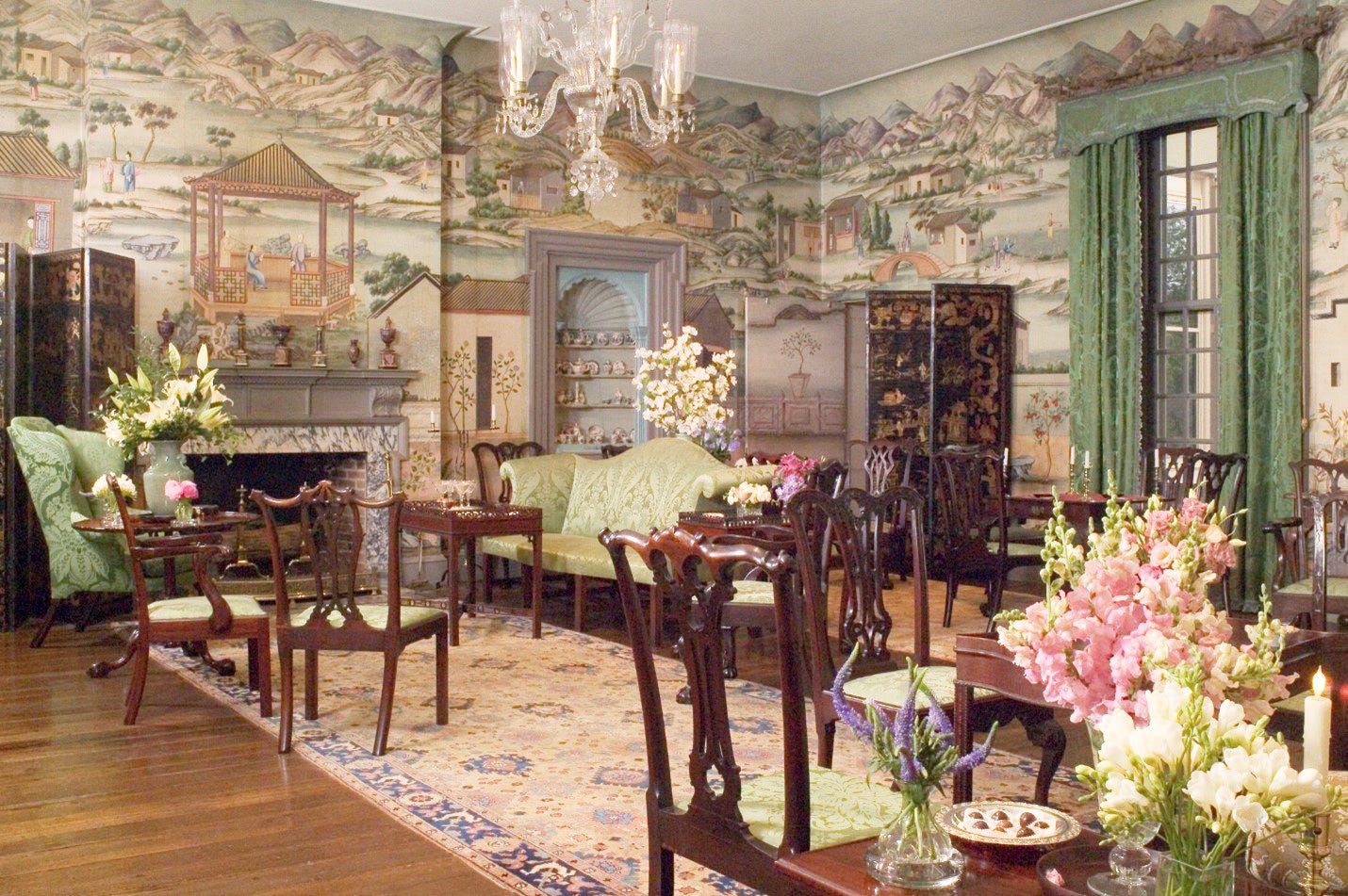
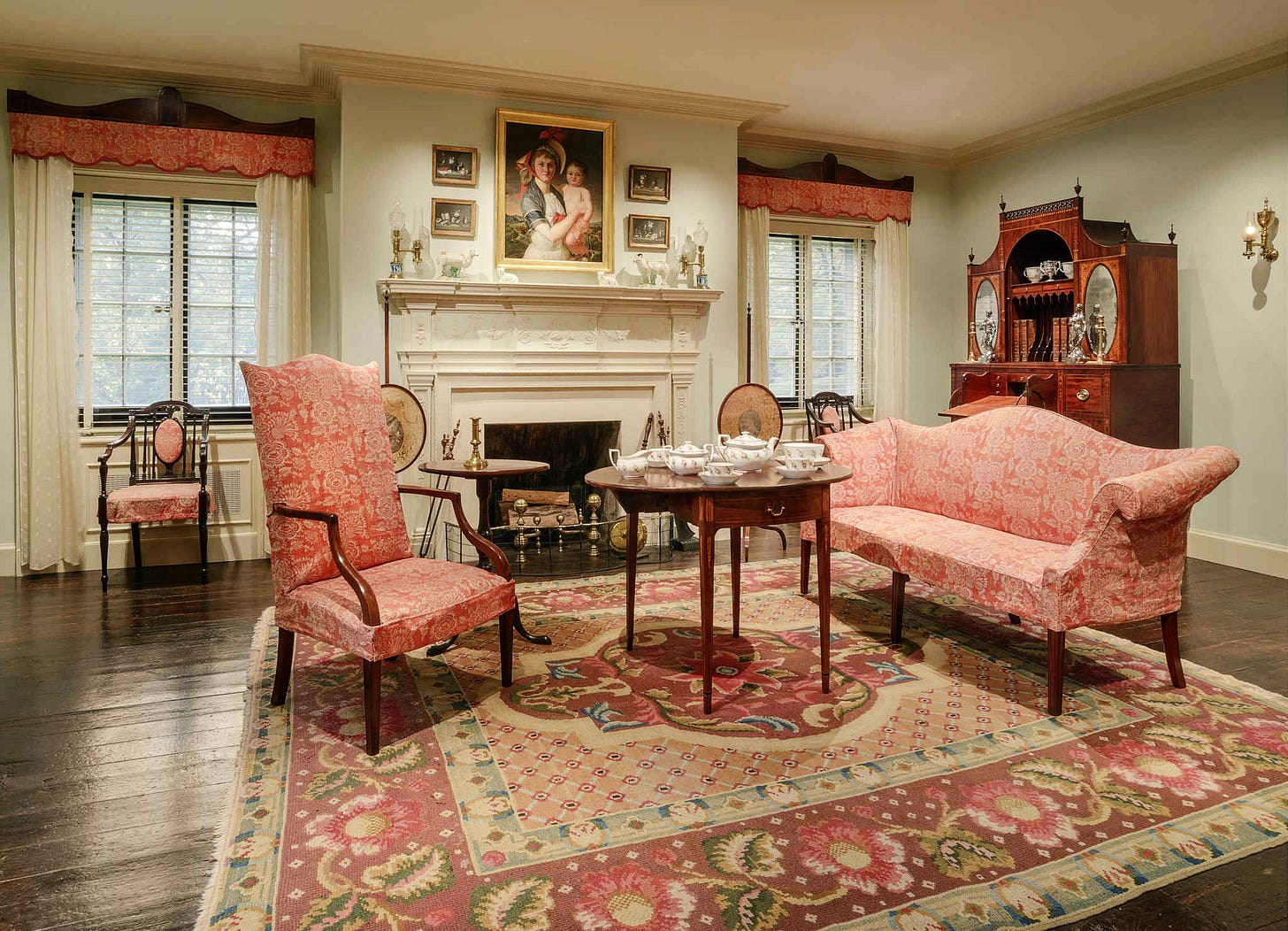
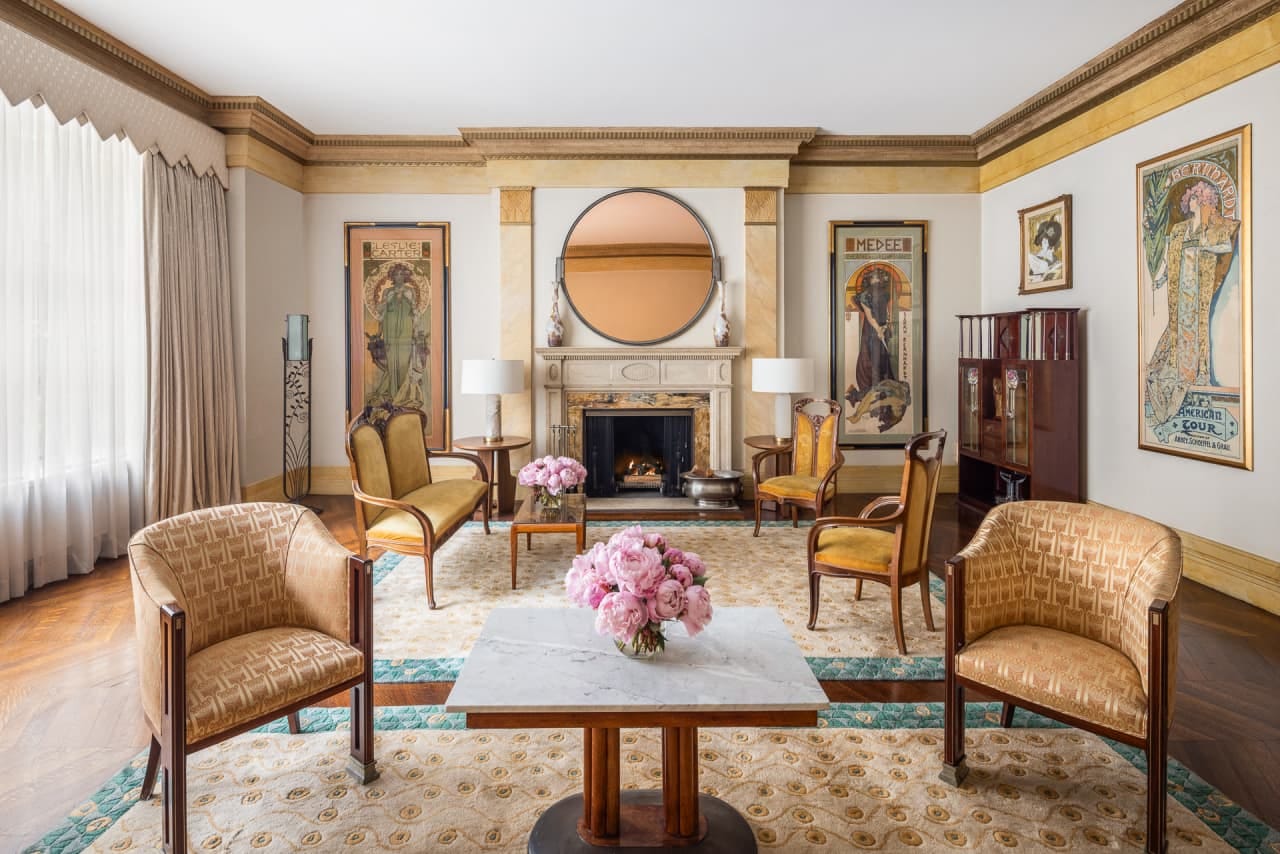
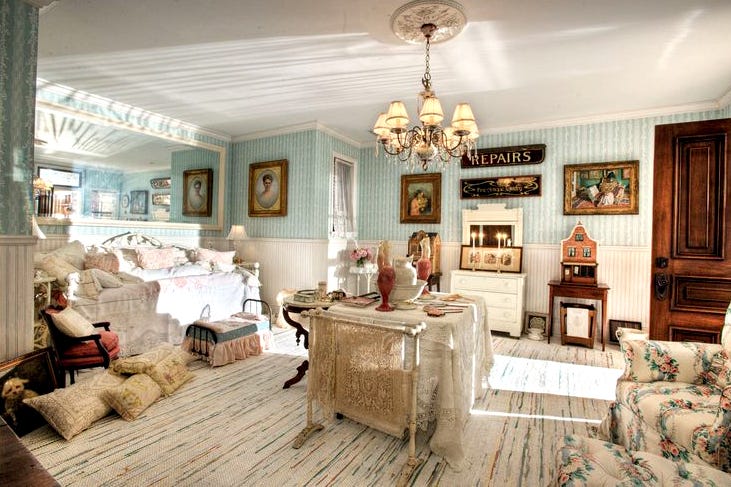
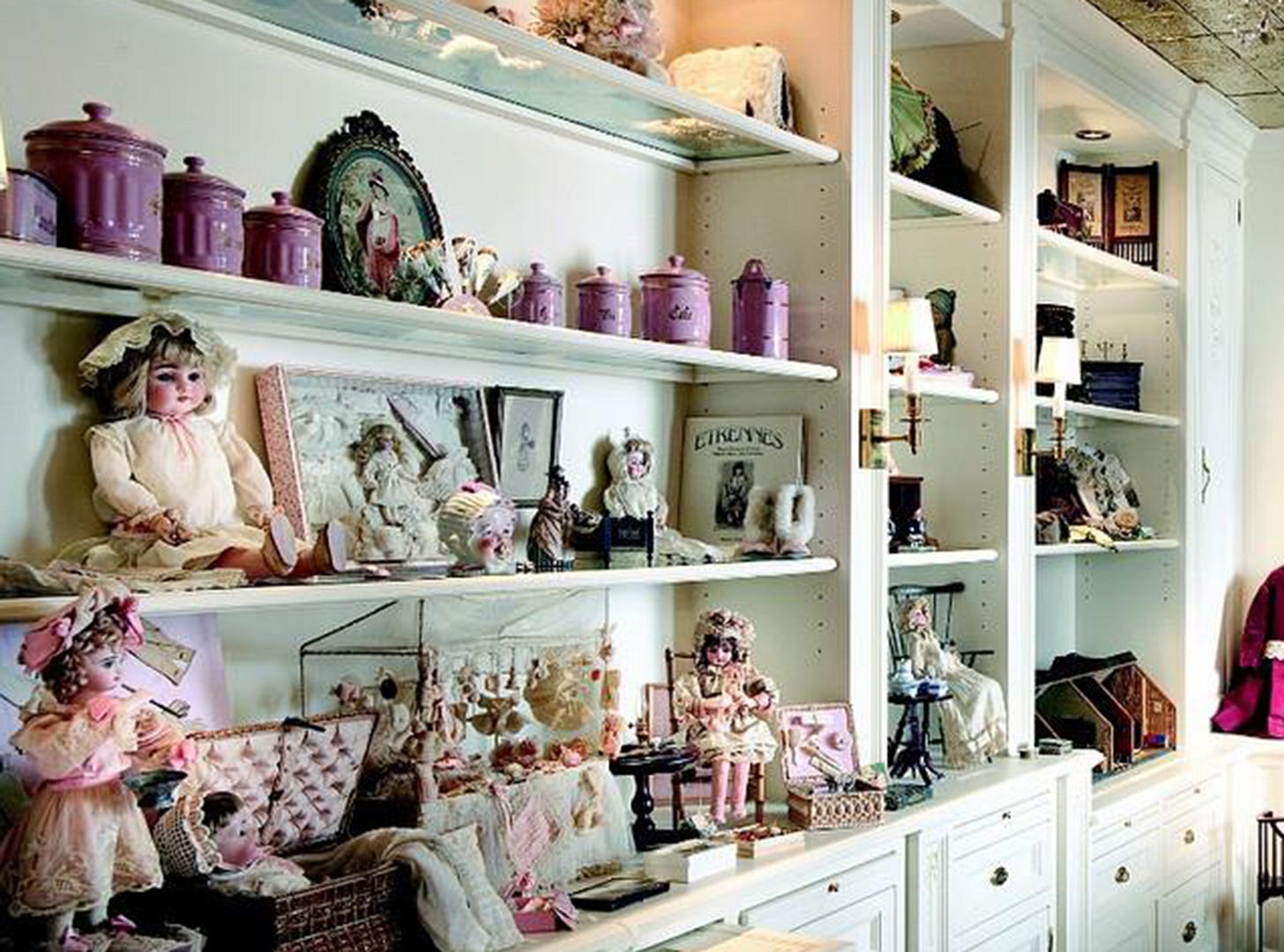
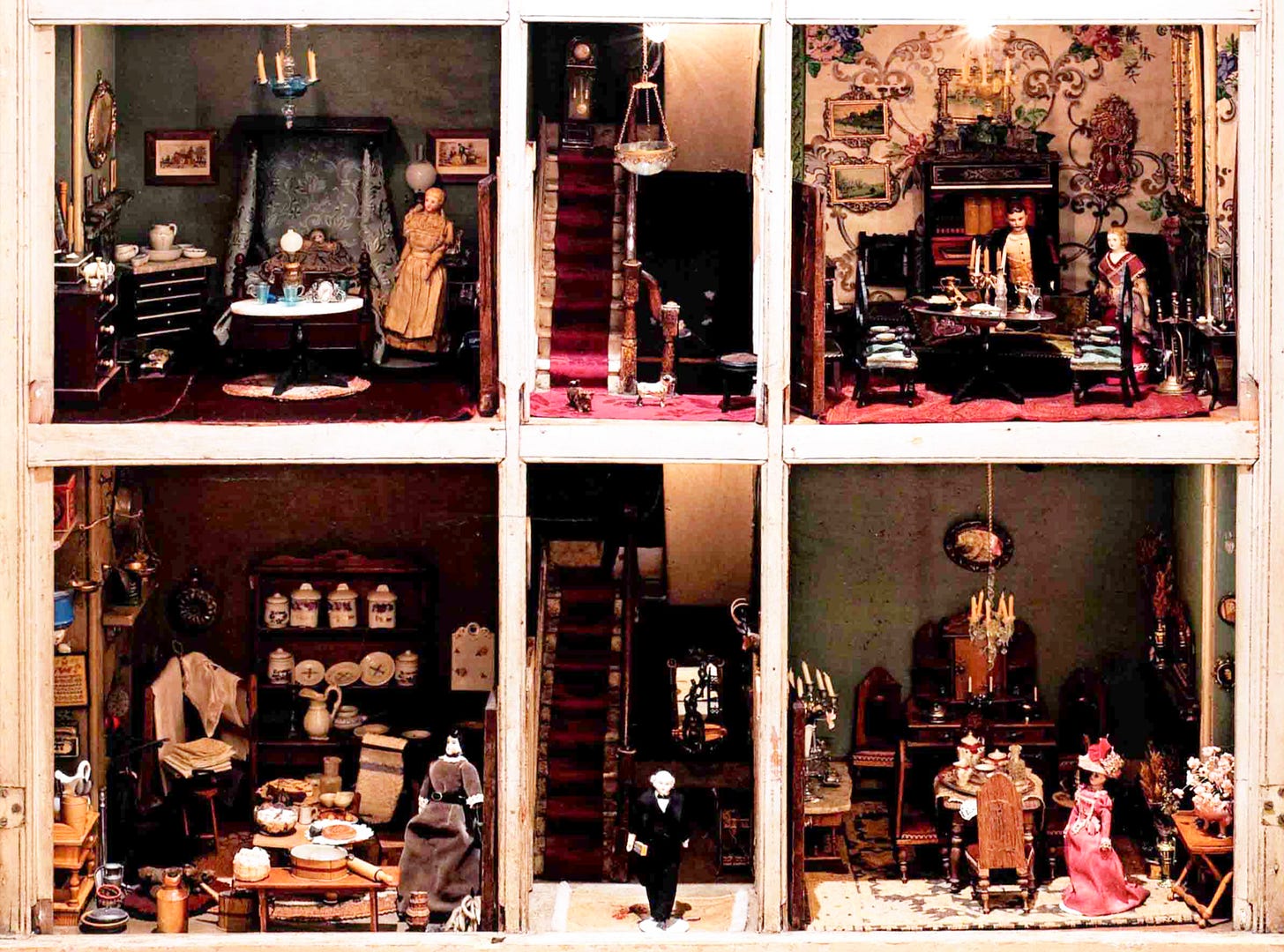
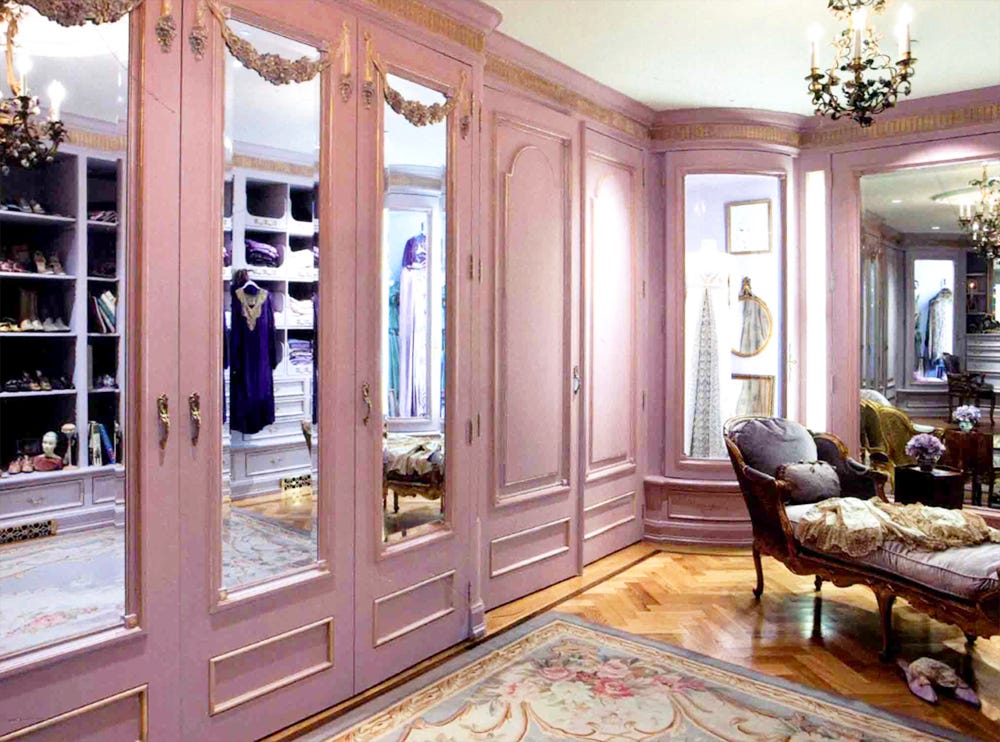
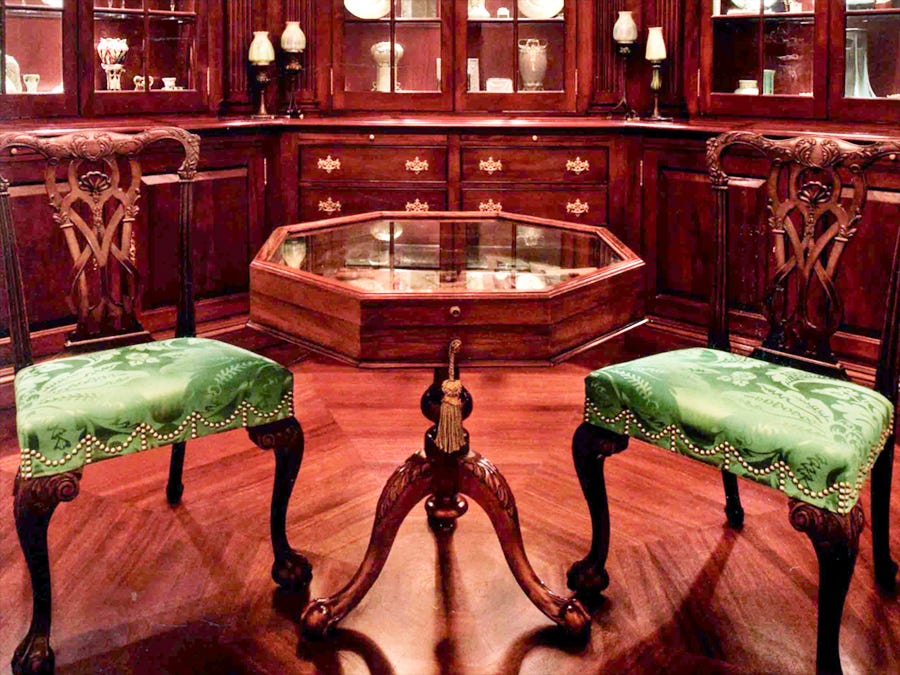

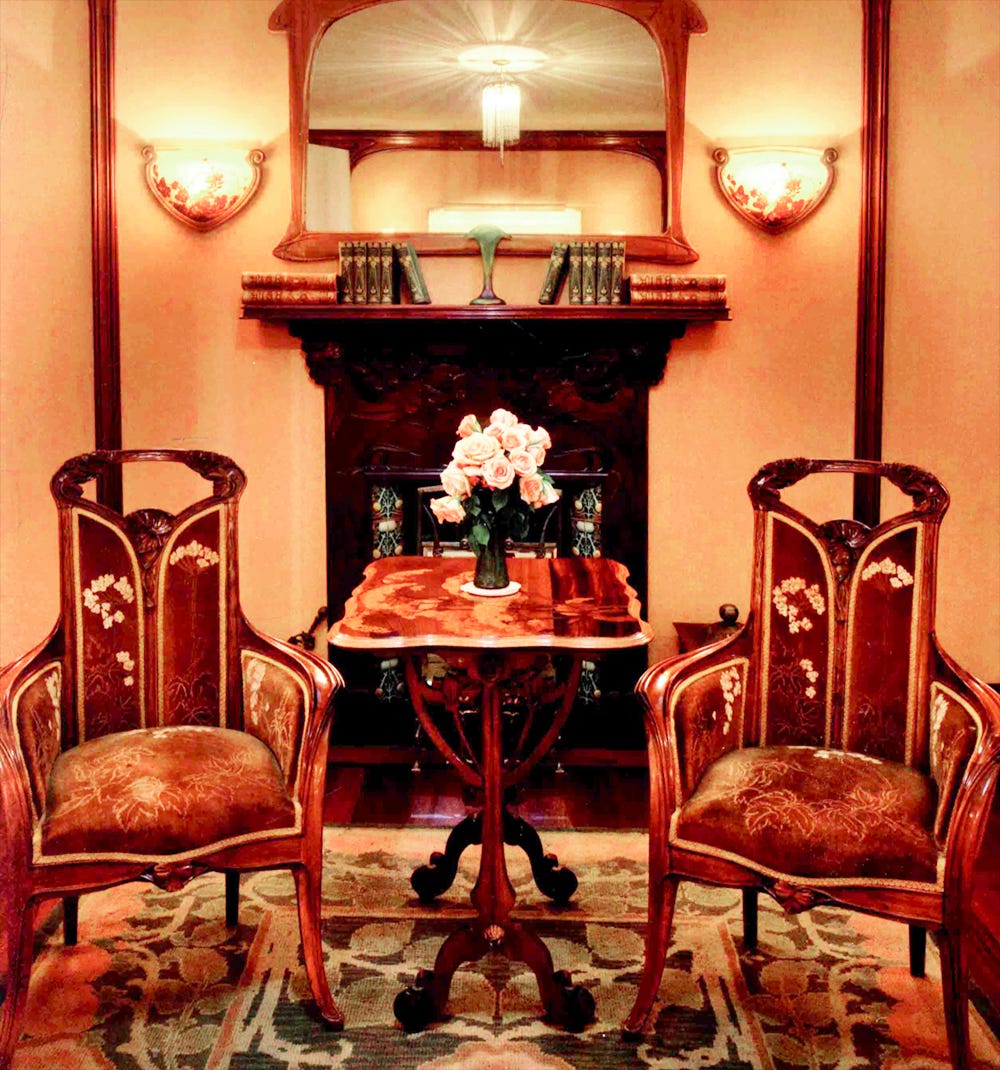
Really interesting. I didnt know it was meant to be a sort of museum for her collectiobs. It seems less weird now!
Wow I had no idea!
And this is my favorite sentence: "Beneath it all, however, lies an undeniable and deeply relatable truth: we all want spaces that reflect who we are and bring a sense of fulfillment."
True. very true.